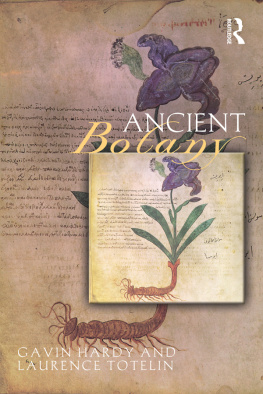Curse Tablets and
Binding Spells from
the Ancient World
Contributors
Catherine F. Cooper
David Frankfurter
Derek Krueger
Richard Lim
Curse Tablets and Binding Spells from the Ancient World

Edited By
JOHN G. GAGER

Oxford University Press
Oxford New York
Athens Auckland Bangkok Bogot Buenos Aires Calcutta
Cape Town Chennai Dar es Salaam Delhi Florence Hong Kong Istanbul
Karachi Kuala Lumpur Madrid Melbourne Mexico City Mumbai
Nairobi Paris So Paulo Singapore Taipei Tokyo Toronto Warsaw
and associated companies in
Berlin Ibadan
Copyright 1992 by John G. Gager
First published in 1992 by Oxford University Press, Inc.
198 Madison Avenue, New York, New York 10016
First issued as an Oxford University Press paperback, 1999
Oxford is a registered trademark of Oxford University Press, Inc.
All rights reserved. No part of this publication may be reproduced,
stored in a retrieval system, or transmitted, in any form or by any means,
electronic, mechanical, photocopying, recording, or otherwise,
without the prior permission of Oxford University Press.
Library of Congress Cataloging-in-Publication Data
Curse tablets and binding spells from the ancient world
edited by John G. Gager.
p. cm. Includes index.
ISBN 0-19-506226-4
ISBN 0-19-513482-6 (Pbk.)
1. Incantations. 2. Blessing and cursing.
BF1558.C87 1992
133.44dc20 91-33236 CIP
1 3 5 7 9 8 6 4 2
Printed in the United States of
America on acid-free paper
Preface
This project arose initially from a desire to define a body of primary materials that might serve to illustrate the long and difficult debate about magic and religion in Western culture. It seemed clear to us that ancient defixionescurse tablets and binding spells inscribed normally on thin metal sheetsoffered a unique body of data. They are largely unknown, as much to general readers as to scholars; unlike the much more familiar spells written on papyrus and preserved in large collections of recipes for use by professional magoi, defixiones survived because they were actually put to use by individual clients; like ancient amulets on stone, they come to us largely unmediated by external filters; unlike ancient literary texts, they are devoid of the distortions introduced by factors such as education, social class or status, and literary genres and traditions. Most of all, they are intensely personal and direct.
Of course, we are not so naive as to believe that the defixiones were uninfluenced by cultural forces: their language is highly formulaic, and clients were often limited by the recipes that the local magos had available in his or her collection of recipes. One final advantage is that defixiones, for the most part, have been uncovered by modern archaeologists precisely where they were deposited by the ancient clients or their agents: in cemeteries, wells, or other appropriate sites.
For several reasons, we made the decision not to include the texts in their original languages. First, our intended audience includes not onlynot even especiallyscholars of Mediterranean antiquity but a broader range of students and general readers. Second, it soon became apparent that for many of these defixiones the published texts are not reliable. Indeed, in many cases, the tablets themselves are no longer available for inspection (for example, most of those published by Wnsch in DTA). The work of reexamining and reediting tablets published at the end of the nineteenth century (such as DTA) and early in this century (such as DT, and Ziebarth, 1934) promises to reach far into the next century. Third, for those who wish or need to consult the texts in their primary languages, editions are readily available, along with more recent catalogues and inventories (for example, SGD for Greek tablets and Solin for the Latin ones). We have tried to provide exhaustive bibliographical references for each of the texts included in this collection; in addition, where individual words or phrases are crucial to interpretation, we have provided them in transliteration.
The principle of organization within each chapter is basically geographical: we begin with ancient Greece (an arbitrary starting point) and circle around the Mediterranean in clockwise fashion. The fact that we have included a few objects from beyond the Mediterranean, such as the bowls from Mesopotamia, indicates that we have not felt tightly bound by any of our categories.
A brief word about the treatment of foreign and especially Greek names is in order. In the texts themselves, we have not Latinized the letters of personal names: Greek kappa remains k, upsilon is rendered as u (rather than the more traditional y), omega becomes , and so on. But in the introductions, annotations, and discussions, we have used the Latinized conventions, especially with common and familiar names. Thus a name will not uncommonly appear in two forms: Skrats (in the text) and Socrates (in the discussion). Voces mysticae those words or terms in a spell that do not represent ordinary languagewe have rendered in upper-case letters. On some tablets it is difficult to decide where one of these voces ends and the next one begins. On others, separations are indicated by various scribal devices, for example, boxes drawn around the vox, suprascript horizontal lines and colons. With a number of tablets, we have attempted to format the translation so as to reflect the unusual ways in which the text was inscribed; we have also included a number of photographic reproductions that illustrate these techniques.
One of the features that distinguishes this book from other collections of ancients texts and documentsa feature that derives from our broad conception of how the world of the ancient Mediterranean must be studied and understoodis the extent to which its contents cross traditionally impervious barriers of language and culture. Thus we include material written not just in Greek or Latin but also in Hebrew, Aramaic, Coptic, and Demotic. Jewish, Egyptian, Greek, Roman, British, and Christian tablets appear side by side, often employing the same formulas, mysterious names, and drawings. On a geographical scale, our tablets range from Britain to North Africa, from Mesopotamia to Spain. Behind this mix lies a conscious intention on our part to undermine the confidence with which cultural, geographical, and chronological labels are applied to ancient texts and traditions, as if they represented clear, distinct, and nonoverlapping categories.
This book has been a collective effort from start to finish. In addition to the primary contributors, I express my gratitude to those whose generous assistance has proven invaluable and in many cases decisive. First among these come Christopher A. Faraone and David R. Jordan, whose impact has been immeasurable. Next we wish to mention the following: Gideon Bohak, Nancy Bookidis, Edward J. Champlin, Valerie Flint, Elizabeth R. Gebhard, Martha Himmelfarb, John J. Keaney, Israel Knohl, Robert Lamberton, Evasio de Marcellis, Joshua Marshall, Stephen G. Miller, Susan Rotroff, Michel Strickmann, and Emmanuel Voutiras. We also acknowledge generous support from Dimitri Gondicas, the Committee on Hellenic Studies and the Dean of the Faculty, all at Princeton University.
Next page








